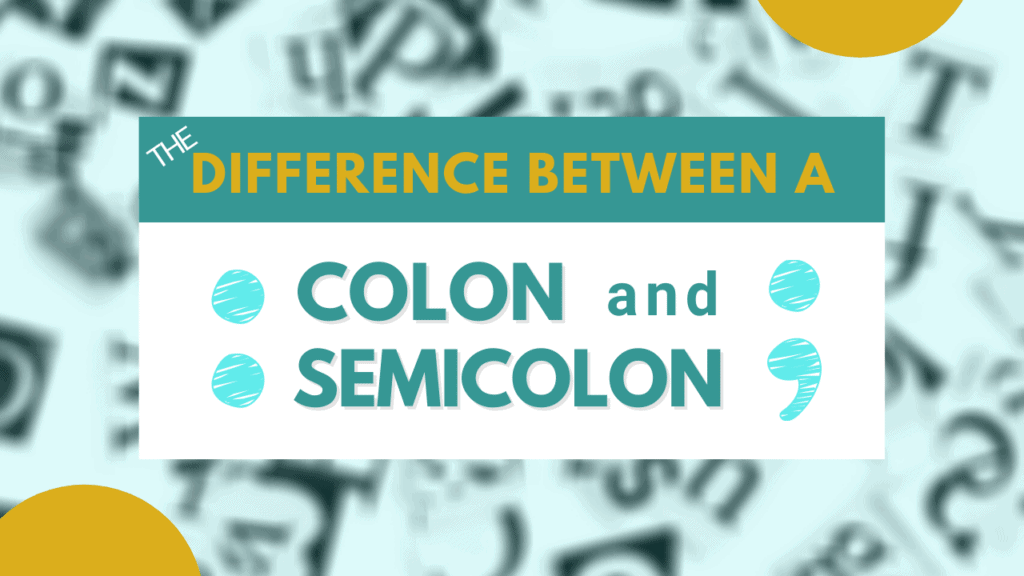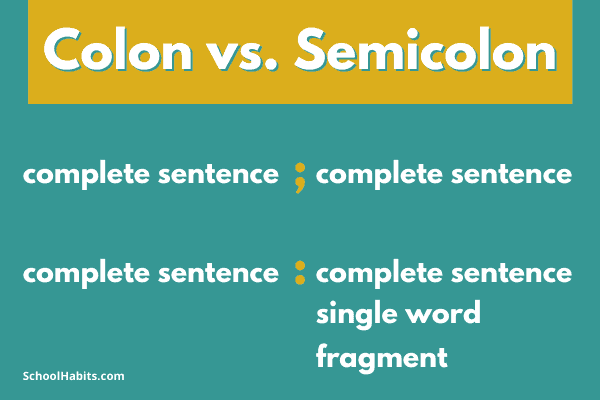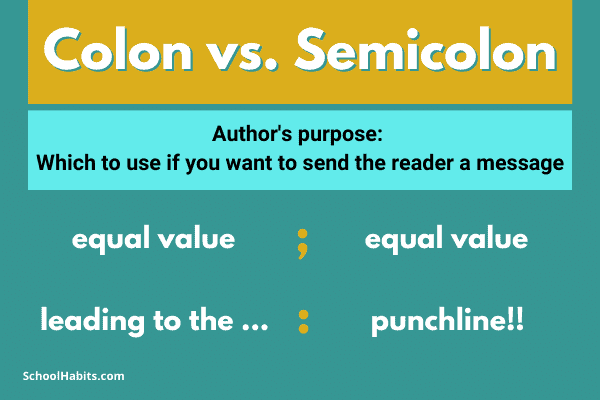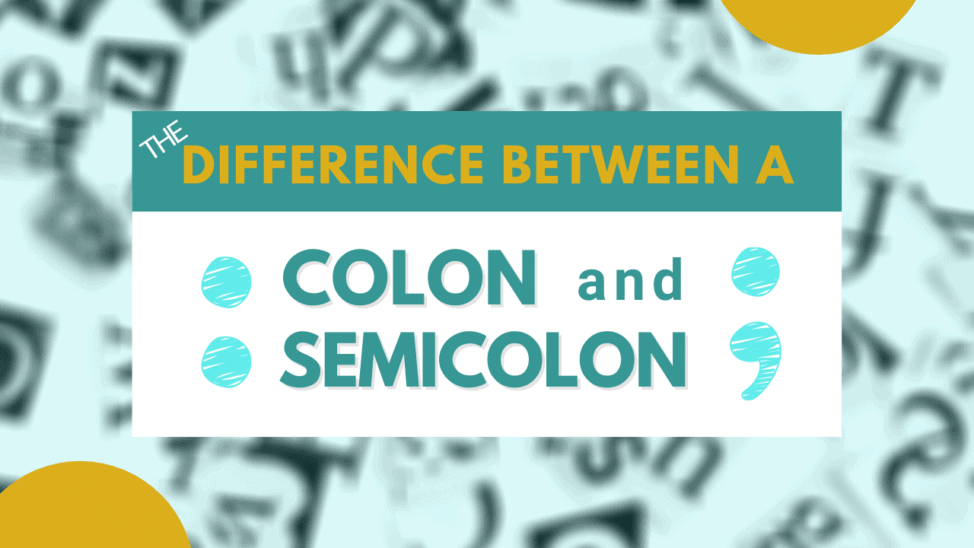
By Katie Azevedo, M.Ed.
One of the most common questions I get when I’m tutoring students for the SAT or ACT is what’s the difference between a colon and a semicolon?
It’s a good question, and fortunately the answer is not that complicated. With that said, there are two answers: 1) a grammatical answer, and 2) an “author’s purpose” answer. Depending on who’s asking, I often offer one answer over the other. Let me explain.
1. The GRAMMATICAL difference between a colon and a semicolon
If you are a student taking the SAT or ACT, you should absolutely just focus on the grammatical answer (below) when learning the difference between a colon and a semicolon. It’s very simple.
SEMICOLON
a. A semicolon can only come between two independent clauses (or two complete sentences). In other words, you must have a complete sentence on both sides of a semicolon, like below:
Complete sentence ; complete sentence
- CORRECT: I like blueberries ; they are awesome in oatmeal.
- INCORRECT: I like blueberries ; and they are awesome in oatmeal.
TIP: If you struggle with how to use a semicolon, then maybe you’re actually struggling with how to recognize a complete sentence vs a fragment.
That’s it. The above semicolon rule is literally the only semicolon rule you need to know for the SAT and ACT. And it applies to real life as well. There is one other use of a semicolon, but you don’t need to know it for the SAT or ACT. If you’re curious, read on.
b. If you have a list of three or more items and at least one of those items is complex (meaning that it has a comma in it), then upgrade your serial commas into semicolons.
EXAMPLE: I like blueberries, strawberries and clementines. (This is a simple list so all it needs is commas.)
EXAMPLE: I like big, juicy blueberries; fresh, sweet strawberries; and clementines. (Two of the list items are complex because they use commas, and so we have to upgrade the serial commas into semicolons so that the reader doesn’t become confused.)
Again, if you’re taking the SAT or ACT, you only need to know rule (a). Rule (b) is not on the SAT or ACT, although it is good to know.
COLON
The grammatical usage of colon is very simple. You must have a complete sentence before the colon, but you can have anything after it.
Complete sentence : anything
- CORRECT: Mike always wore the same outfit to school: blue pants and a red top.
- CORRECT: Mike always wore the same outfit to school: he wore blue pants and a red top.
Let me repeat this: As long as you have a complete sentence before a colon, you can have anything after it, including another complete sentence, a fragment, a list, or even a single word.
Yes, you may have noticed that there are times when the colon and semicolon are interchangeable, but the SAT and ACT will never put you in that situation.

2. The “author’s purpose” difference between a colon and a semicolon
Whether you use a semicolon or a colon in your own writing often comes down to what is your purpose. A colon and a semicolon each indicate something unique to the reader, and so as a writer, you need to consider what your intention is.
Here is the simple difference between a colon and semicolon from an “author’s purpose” context:
SEMICOLON
Use a semicolon to connect two sentences that have equal value.
COLON
Use a colon to signal the reader that the most important part of the sentence is what comes after the colon (kind of like the punchline).
- EXAMPLE: I like blueberries; they are awesome in oatmeal.
- EXAMPLE: I like blueberries: they are awesome in oatmeal.
In the first example, both sentences have equal value. The writer is telling the reader that one is not more revealing or interesting than another. In the second example, the colon tells the reader that the most important part of the sentence – the part you as a writer want the reader to focus on – is the fact that blueberries are good in oatmeal.

Let me remind you that if you’re taking the SAT or ACT, or simply just care about being grammatically correct (which you should), then the rule you should focus on is #1, the grammatical difference between the colon and semicolon.

